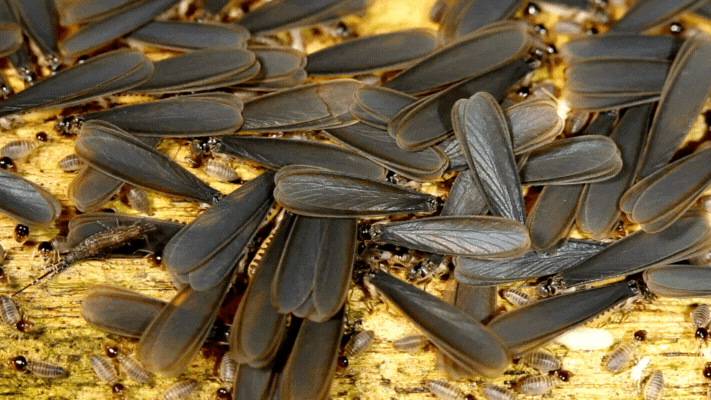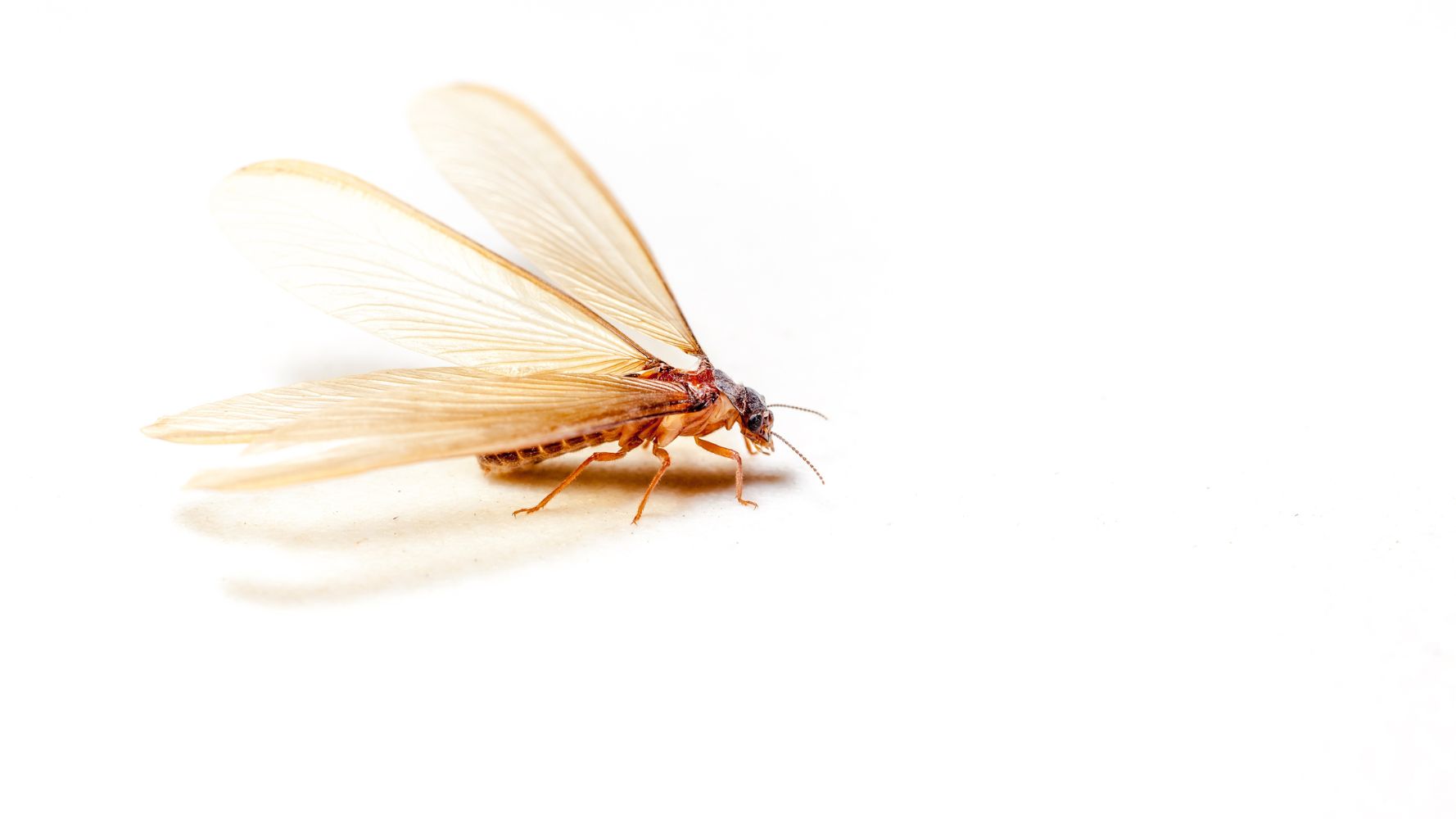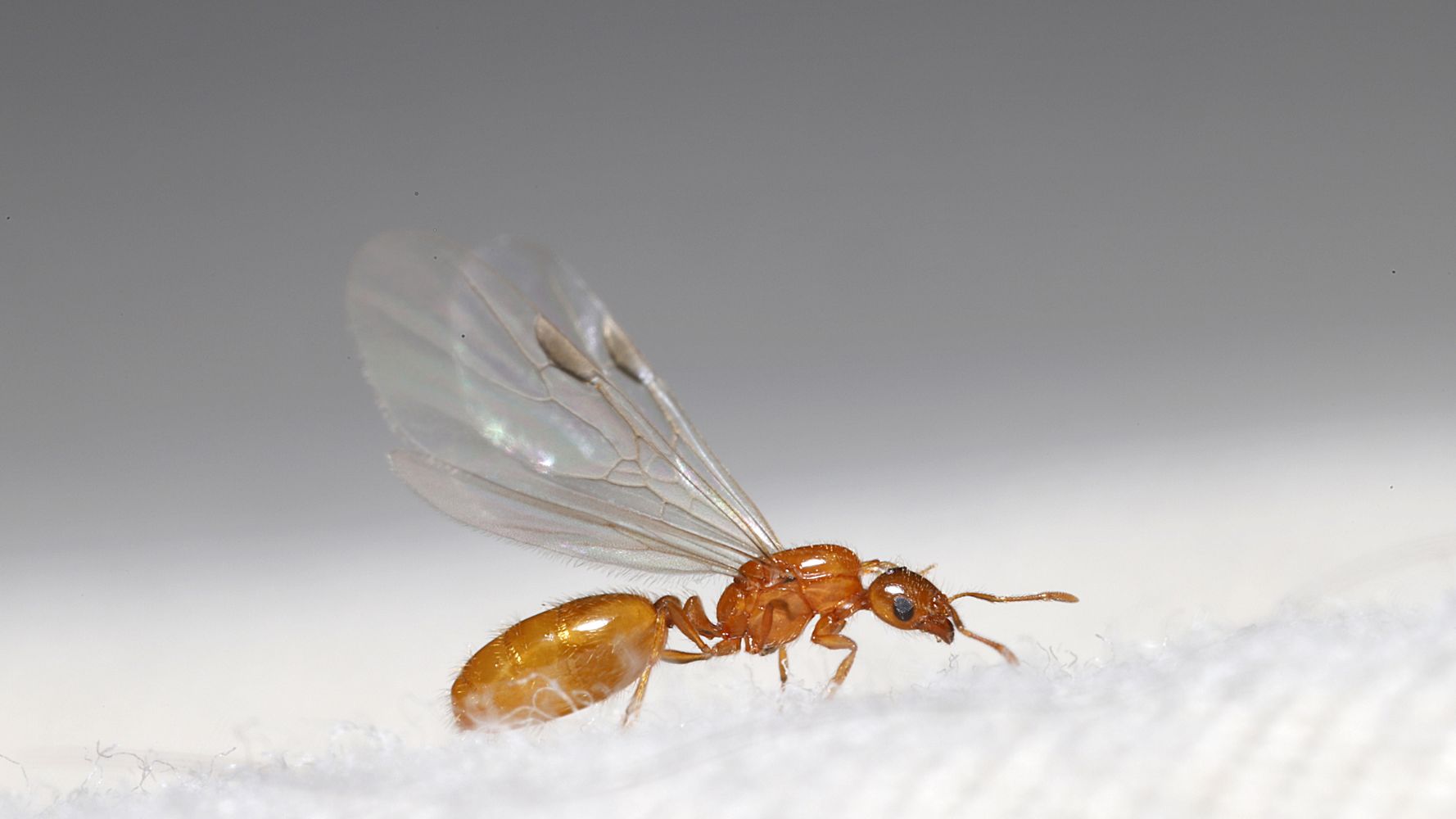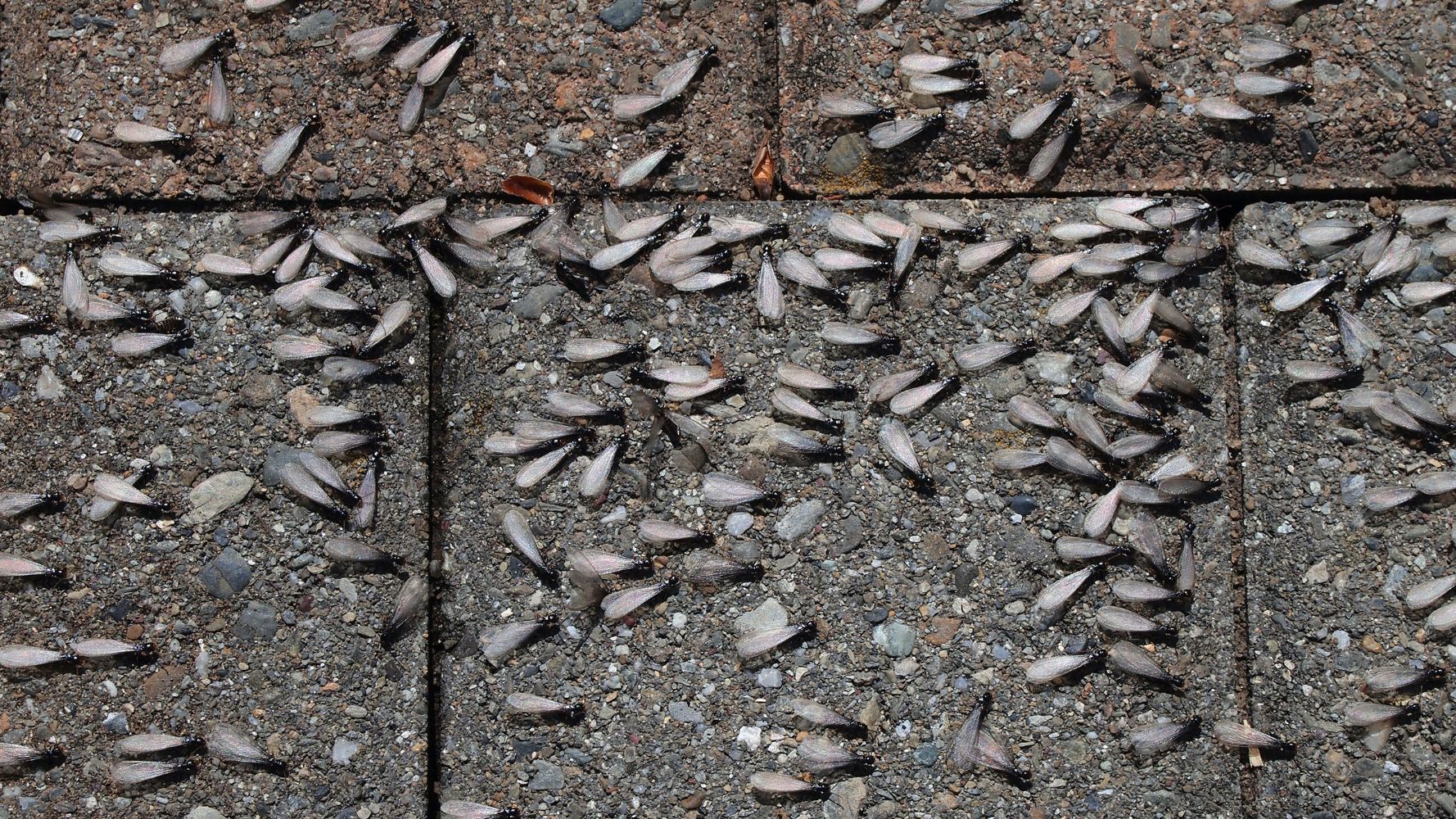Flying Ants vs Termites: How to Tell the Difference
Many homeowners know that termites have a flying reproductive phase – known as swarmers. Spotting a cloud of these creatures is a warning sign that your home may be under attack from these wood-loving insects!
However, swarmers closely resemble flying ants, and being able to distinguish between the two can help you determine if it’s time to start worrying! This article will give you the knowledge necessary to make a quick field (or lawn) identification and determine whether or not you should be contacting your local pest control company for a termite inspection!

Physical Differences
From a distance it can be hard to tell the difference between flying termites and winged ants; they are both black or dark brown and are approximately the same size.
However, if you’re willing to capture a few then you should easily be able to identify what sort of swarm you’re looking at.
Note: Some flying ants can bite or sting – so exercise care when capturing and handling them!
Body Structure
A clear difference between termites and ants is their thorax (waist). Termite bodies are uniformly thick, while ants have distinctly narrow waistlines. You can think of it as the difference between a stocky honeybee (termite) and the pinched waist of a wasp (ant).
Wing Length
The flying forms of both termites and ants have two sets of wings – however termite wings are of equal length while the front wings on flying ants are significantly longer than their hind wings.
Another difference related to wings is shed wings. Both termites and ants tend to drop their wings after finding a suitable nesting site – but mounds of wings beneath a windowsill is a more typical sign of termites than ants.
Antennae Shape
A final physical difference between termites and ants is their antennae. Termite antennae are straight, although they may droop a bit due to their length. Unlike termite’s straight antennae, ant antennae have a pronounced bend roughly at the midpoint, with an angle approaching 90 degrees.
Winged Termite
Behavioral Differences
While both termite swarmers and flying ants represent the reproductive part of their respective life cycles – they have slightly different behaviors which can offer clues about the particular type of flying insect you are viewing.
Nesting Habits
This is a big one. If the swarm has landed on the side of your home – you’re probably looking at a termite swarm! While carpenter ants make their home in wood, they tend to prefer natural sites like rotting logs and dead trees. In either case – whether you’ve got a termite problem or an ant infestation, seeing a swarm on your home is a good sign you should call a pest control service!
Another nesting behavior to keep an eye out for is mud tubes. Subterranean termites use these tubes as sheltered highways leading into your home. If you see these tubes alongside your foundation or within your crawl space you are looking at a clear sign of a termite infestation!
Winged Ant.
Swarm Behavior
Winged termites usually swarm in larger numbers than ant swarms, and they typically fly closer to the ground. Flying ants are more acrobatic flyers – but this difference can be hard to discern without having first seen both.
Diet Differences
While both swarms are looking for a place to make a new colony, termites don’t just see your home as a cozy place to stay. Termites eat cellulose – the main component of wood – and can quickly cause severe structural damage.
Carpenter ants, on the other hand, only live within the wood, meaning that they cause far less damage than termites. Left untreated, carpenter ants can cause problems and so ant control should not be skipped when necessary, but there is far less urgency.
What to Do If You Spot Them
If you see a swarm of flying termites or ants beneath a street light near your home, you probably don’t have much to worry about. However, if you’ve spotted the swarm on your home or have seen other signs of termite infestation, it is time to contact a professional exterminator.
The experts at Clemson University’s Extension Office recommend against DIY termite treatments as these are rarely effective and only allow more time for termite damage to accumulate.
Prevention Tips
1. Keep Wood Away from Your Home: Termites are attracted to wood, so it’s crucial to minimize their access to it.
- Store firewood, lumber, and other wood materials away from your home’s foundation.
2. Maintain Proper Drainage: Termites are attracted to moisture, so keeping your property dry helps deter them.
- Ensure that your home has proper drainage, including downspouts and gutters that direct water away from the foundation.
- Repair any leaks in your roof, plumbing, or gutters.
- Ensure good ventilation in basements and crawl spaces to prevent moisture buildup.
3. Reduce Soil-to-Wood Contact: Termites can build mud tubes to access wood from the ground, but increasing the distance helps to deter their infestation or at least make it easier to notice.
- Maintain a gap between soil and wooden structures, such as siding, by at least 6 inches.
4. Regular Inspections: Regularly inspect your property for signs of termite activity. Look for:
- Mud tubes on the exterior walls or foundation.
- Hollow-sounding or damaged wood.
- Discarded wings (termites shed their wings after swarming).
- Small holes or tunnels in wood.
5. Professional Inspection: We recommend scheduling regular professional termite inspections, especially if you live in an area prone to termite infestations. Professionals can detect early signs of termites that you may miss.
6. Termite Treatments: Preventative termite treatments, such as soil treatments or bait systems, are a great idea in high termite risk areas like the South Carolina Midlands. Consult with a local pest control professional for the best treatment options.
Know Your Swarm
Both termites and ants can create alarming swarms. Instead of worrying unnecessarily, you can use the tips in this article to identify whether or not you have a swarm of termites near your home! Flying ants are a far less serious issue and if they aren’t buggin’ you then you probably don’t need to take any immediate action.
Termites are a different story and you should make sure that your home is protected against termites, as these voracious eaters can rapidly wreak havoc!



